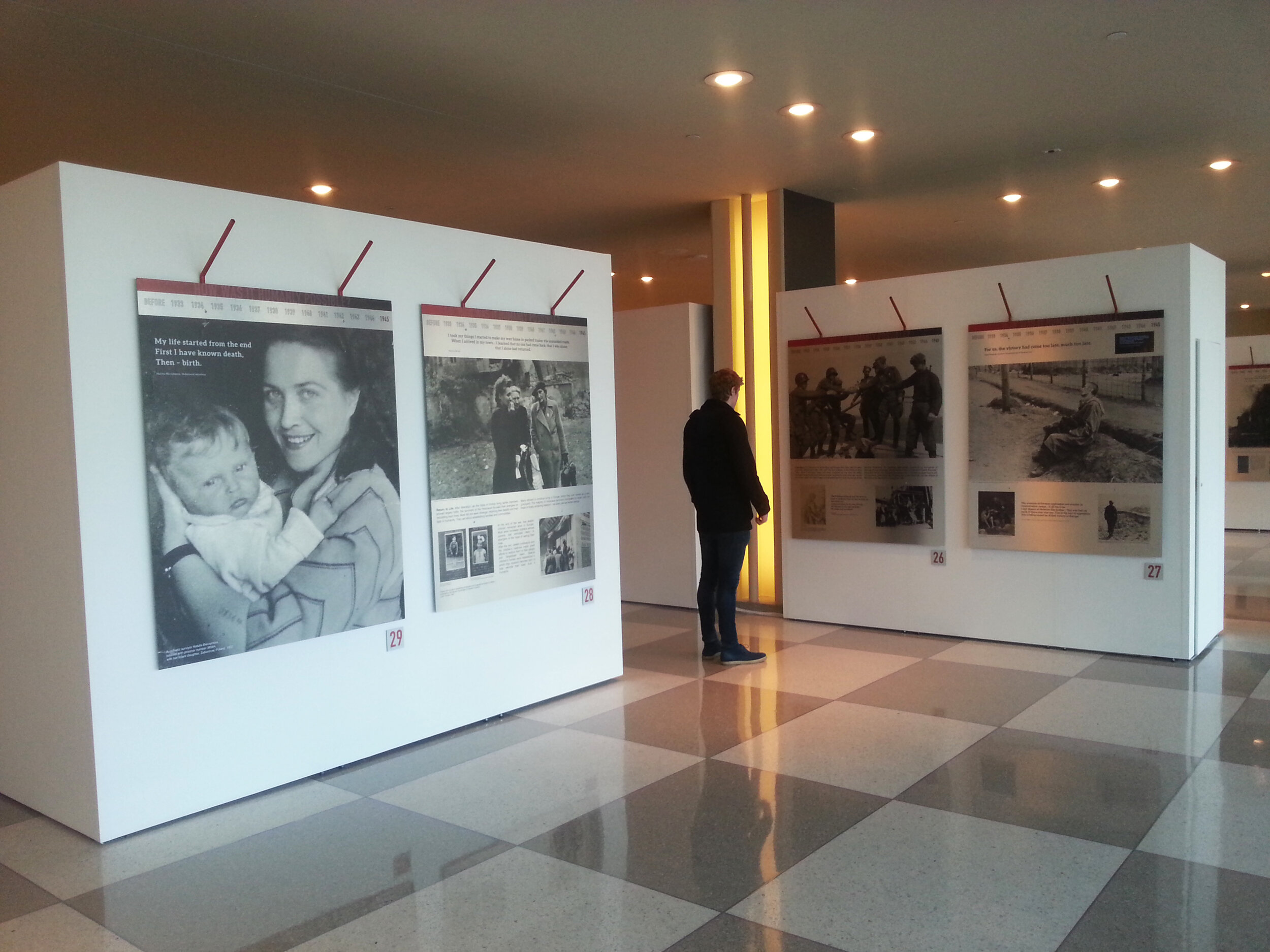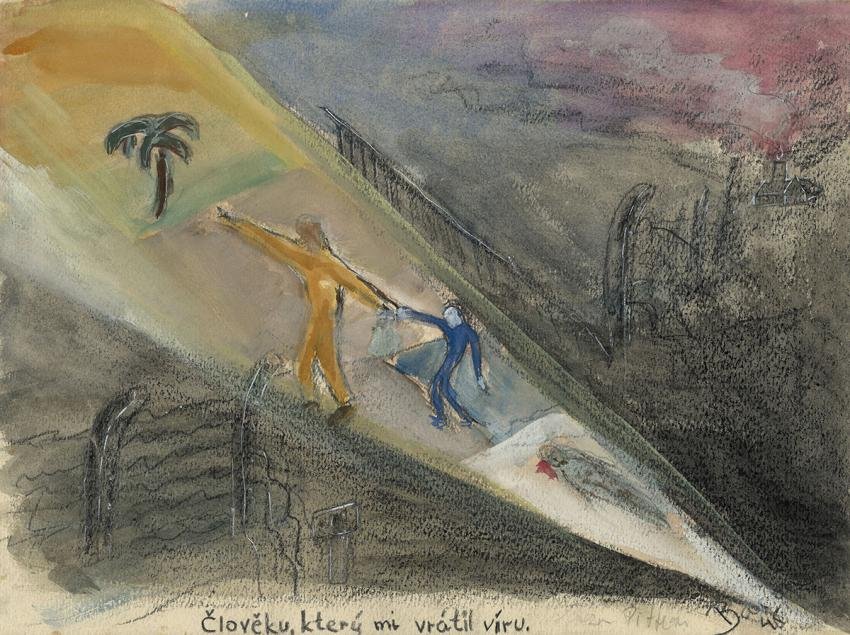READY2PRINT EXHIBIT
ready2print refers to high quality exhibitions that are suitable for display in schools, places of worship, libraries, and community centers. They can be downloaded and printed locally anywhere in the world. The ready2print exhibitions are developed at Yad Vashem to promote dialogue about the Holocaust, its universal lessons, and the relevance to daily life in the 21ˢᵗ century. There are ten exhibits to choose from and there is no charge to download the exhibit.
Some exhibits are also printed and available for borrowing from the offices of the Canadian Society for Yad Vashem.
You can order a ready2print directly on the Yad Vashem website.
Click HERE or scroll below to access the various exhibits available.

READY2PRINT SPECS
ready2print exhbitions are:
• available in English and other languages such as French (depending on the exhibit)
• unique exhibitions that offer a gate to Yad Vashem’s vast collections
• high resolution, graphic digital files, along with technical printing instructions – your logo can be incorporated in the opening panel
FOR MORE INFORMATION
The exhibits can be accompanied by age-appropriate educational material (free of charge). For more information, contact Alana Saxe at alana@yadvashem.ca or 416-785-1333.

AVAILABLE EXHIBITS THROUGH CSYV
Exhibits are available through CSYV offices or through Yad Vashem. They may be available in either a fully printed exhibit or in a downloadable version.

SHOAH
How Was It Humanly Possible?
The Holocaust was an unprecedented genocide, total and systematic, perpetrated in Europe from 1933 to 1945, by Nazi Germany and its collaborators, with the aim of annihilating the Jewish people from the face of the Earth.
The exhibition deals with major historical aspects of the Holocaust, beginning with Jewish life in pre-Holocaust Europe and ending with the liberation of Nazi concentration and extermination camps across the continent and the remarkable return to life of the survivors.
The panels feature explanatory texts, interspersed with personal stories of the victims, quotes, original photographs and images of relevant artifacts.
Available in English, French and other languages — 18 panels

ART IN THE HOLOCAUST
This exhibition provides a glimpse into art created during the Holocaust in ghettos, camps, forests, and while in hiding. The artworks reflect the tension between the artists' need to document the terrible events they endured and their desire to break free through art, and escape into the realms of beauty, imagination, and faith. These artworks, from Yad Vashem's Art Collection, stand as a testimony to the strength of the human spirit that refuses to surrender.
Available in English, French and other languages — 21 panels

STARS WITHOUT A HEAVEN
Children in the Holocaust
This exhibition is dedicated to the unique stories of children during the Holocaust. During a period when Jewish communities underwent social and familial upheaval, children living in this reality essentially lost their childhood. The drawings, poems, letters, and toys displayed in this exhibition demonstrate the unique capacity of children to hold on to the forces of life, creativity, imagination, and optimism, despite facing dire circumstances.
Available in English, French and other languages — 19 or 27 panels (Extended Version)

RESCUE BY JEWS DURING THE HOLOCAUST
“That was when my conscience said – Act!”
The Jews in the Holocaust found themselves facing unprecedented situations, which tested their human principles of solidarity. Despite this, there are a multitude of cases across the board of mutual aid which was nothing short of essential to the survival of a particular individual. In this context, many Jews chose to act to save other Jews, under a very real threat to their lives. These rescuers demonstrated tremendous resourcefulness, adhering to their missions with endless devotion. A unique aspect of this phenomenon lay in the persecuted victims' ability to identify the threat facing them and, despite their basic survival instinct, find within themselves the moral courage to step up and engage in the rescue of other persecuted Jews. These rescue efforts were in many cases made possible thanks to cooperation with non-Jews and helped save the lives of many Jews during the Holocaust.
Available in English, French and Hebrew — 20 panels

“THEY SAY THERE IS A LAND”
Longings for Eretz Israel During the Holocaust
For 2,000 years, Jews prayed and dreamed of their return to Zion. The affinity to Eretz Israel was expressed in prayer, philosophy, poem and song, in life-cycle events and on Jewish holidays – not in a political or active manner, but by individuals and groups who immigrated to Eretz Israel, and settled there. Others visited and wrote about the Land, and for hundreds of years, there was a consistent, albeit limited, Jewish presence in Eretz Israel.
This exhibition focuses on the longings for Eretz Israel during the years 1933-1948 – from the rise of the Nazi Party to power to the outbreak of World War II, and from the annihilation of European Jewry until the end of the war and the establishment of the State of Israel. World War II and the Holocaust shook the foundations of the outlooks and worldviews that had developed and existed among the Jewish people, regarding its future. However, even during those terrible times, in the midst of the struggle for life, Eretz Israel held a firm place in the hearts and thoughts of the Jews.
The different ideologies once running through the Jewish communities collapsed in the wake of the Holocaust. The processes promoted by the Zionist movement even before the Shoah, and that were strengthened afterwards, brought about, after a stubborn struggle, the establishment of a Jewish state in the Land of Israel.
Available in English, French and Hebrew — 22 panels

THE RIGHTEOUS AMONG THE NATIONS
In a world in which hostility and indifference prevailed, there was a small non-Jewish minority who regarded the Jews as fellow human beings who came within the bounds of their universe of obligation. These individuals mustered extraordinary courage to uphold human values, and to rescue hunted Jews with no expectation of remuneration. These were the Righteous Among the Nations.
Rescue took many forms and the Righteous came from different nations, religions and walks of life. What they had in common was that they protected their Jewish neighbors in a world of total moral collapse.

SPOTS OF LIGHT
To be a Woman in the Holocaust
This exhibition gives expression to the unique voice of Jewish women in the Holocaust: their choices and responses in the face of the evil, brutality, and relentless hardship that they were forced to grapple with.
The exhibition features nine aspects of the Jewish woman's daily life during the Holocaust: Love, Motherhood, Caring for Others, Womanhood, Resistance and Rescue, Friendship, Faith, Food, and the Arts. Each is accompanied by a personal story, related in the first person. By giving expression to these individual women, the exhibition reveals the poignant stories behind the historical events and provides faces and voices within the darkness and silence.
Available in English, French and other languages — 21 panels

AUSCHWITZ – A PLACE ON EARTH
The Auschwitz Album
About six million Jewish men, women and children were systematically murdered by the Nazis during the Holocaust. Over one million were murdered in Auschwitz-Birkenau, the largest extermination camp during WWII.
This exhibition depicts the only known visual documentation of the arrival of a transport of Jews to Auschwitz-Birkenau. The photos in the album show the entire process except for the killing itself of the Jews from the Carpatho-Ruthenia region. The album with the photos used in this exhibit were discovered by Lilly Jacob and donated to Yad Vashem.
Available in English, French and other languages — 16 panels
(ready2print version from Yad Vashem Jerusalem)

ANGUISH OF LIBERATION
As Reflected in Art
This exhibition features 11 artworks that were created immediately after the liberation and up until 1947. The exhibition is comprised of the artworks and the personal story behind each of them. It investigates how survivors reacted to the liberation through art.
When liberation finally arrived, the survivors found themselves torn between their desire to return to life and their need to face the devastation and mourn. The exhibition is based on the Yad Vashem Art Collection.
Available in English, French and other languages — 13 panels
(ready2print version from Yad Vashem Jerusalem)

BESA
A Code of Honor
This exhibition features photographs taken by the American photographer Norman Gershman and personal rescue stories of Muslim-Albanian families who saved Jews and were recognized as Righteous Among the Nations by Yad Vashem.
The remarkable assistance afforded the Jews was grounded in Besa, a code of honour, which still today serves as the highest ethical code in Albania. The exhibition is based on 12 large photographs and the outstanding rescue stories behind them.
Available in English, French and other languages — 30 panels
(ready2print version from Yad Vashem Jerusalem)

